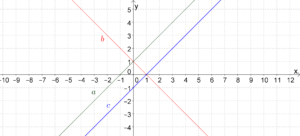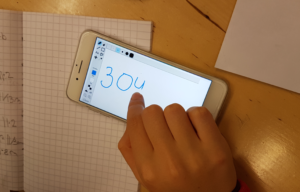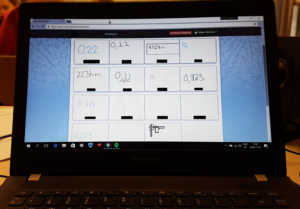The digitization of schools is in full swing, and currently there are active ongoing discussions about how the digital teaching materials should be designed to function in the modern classroom. It is said that digital teaching materials in mathematics should offer more than only displaying text or exercises on a screen. Teaching materials should be designed to support student learning and facilitate the work of teachers in gathering information about student’s knowledge. It should also be possible for a teacher to adapt the content to their own teaching style and enable collaboration with associate teachers and an easy way to include student’s guardians.
All of the demands listed above are true, however, in the eager of discussing digital features the importance of didactics is often overlooked. The starting position should not be thinking about what features digitalisation brings. The starting position should be what students should learn. What skills do we want the learner to possess after elementary school? How can we create lasting knowledge? If we want students to be able to work together, and to be able to research and solve more complex problems on their own, greater demands on the teaching material are necessery, other than being digital. The content must be coherent and encourage students to research and collaborate with well designed tasks. In this way students will evolve into independent, creative problem solvers. The digital functionality of the material should support students work and facilitate the teacher’s job.
Support is the key word here. Under no circumstances should technology try to replace all equipment or methods in the classroom. For example, many are trying to use autocorrecting programs which students use to type in their solutions so that the program locates mistakes if there are such. This should not try to replace learning by calculating on paper, it should only be an addition, and here is why:
The first problem with this is that you cannot efficiantly type mathematics on a phone, meaning you will need computers with keyboards for every student. This is expensive and typing mathematics on a computer is still time consuming. And lets be honest. Who of us would scetch a solution on a computer when solving a problem rather than on a paper? Secondly the program must also understand all kinds of different ways to solve a problem and this is no easy task. And finally, if a computer makes random tasks the tasks will be repetative and not encourage students to research nor collaborate.
For the sake of the argument, lets ignore the problems listed above and think about what this does for student’s learning. Learning is a long process that requires a lot of hard work. When you make an arithmetic error a big part of learning is going through your calculations trying to find the error. Going through calculations trying to find an error is a big reason why a mathematician must document every step of his solution and why we teach it in school. By going through your calculations trying to find a mistake you strenghten what you already know, and when you do find the mistake, you learn from it and you will probably not repeat it again. But even if you do you will have a much easier time finding it the next time.
By filling in steps of a solution on a computer you do not even practise to carefully write down all steps on paper. The computer immediately telling you where the mistake is, also deprives the student of finding it which of course is an important activity in learning and a skill needed later in life. So by removing this activity we also remove an important part of learning that develops important skills. So let’s not forget that we have teachers. Technology is nowhere advanced enough to replace the teacher’s work in the classroom. A teacher knows his student’s strenghts and weaknesses and can guide and interact with students in a way that a computer probably never will.
So no, technology shall not replace pen and paper. However, technology can be a very useful addition. It is very easy to design tests that are autocorrected meaning students get immediate response and they remove a huge workload from the teacher. These tests shall of course be used to see if students have learned some specific part, but they are insufficient in the learning process at first.
 My personal favorite is tests with different alternatives and you shall try to find the right one. For example, a square is a rectangle; true or false? Or, which of the lines represents the function y=x-1? (See picture). With these kinds of question you can easily see if students have understood the basics and it is possible to highlight details that you otherwise would not care that much about in a standard test. So this test does not replace anything but it is a nice addition that support the learning process.
My personal favorite is tests with different alternatives and you shall try to find the right one. For example, a square is a rectangle; true or false? Or, which of the lines represents the function y=x-1? (See picture). With these kinds of question you can easily see if students have understood the basics and it is possible to highlight details that you otherwise would not care that much about in a standard test. So this test does not replace anything but it is a nice addition that support the learning process.
 When it comes to technology it can do a lot more than only making the material digital. Technology can also bring efficient tools for the teacher. For example, a teacher always gathering information about his student’s progress is proven to increase student’s learning. However, a teacher trying to map all of the students progress in class can be difficult or time consuming without the proper system or tools. Let me introduce you to the digital whiteboard. The teacher asks a question to the class and all students can write their answer on their device which will be displayed for the teacher. This is a highly effective way in gathering information of all student’s knowledge in class and a good example of how technology can be implemented in the classroom.
When it comes to technology it can do a lot more than only making the material digital. Technology can also bring efficient tools for the teacher. For example, a teacher always gathering information about his student’s progress is proven to increase student’s learning. However, a teacher trying to map all of the students progress in class can be difficult or time consuming without the proper system or tools. Let me introduce you to the digital whiteboard. The teacher asks a question to the class and all students can write their answer on their device which will be displayed for the teacher. This is a highly effective way in gathering information of all student’s knowledge in class and a good example of how technology can be implemented in the classroom.
As a conlusion I personally understand that some teachers dislike digital teaching materials. This might be because they have not been introduced to all the wonders technology can do, or maybe they have tried out a digital material that has not been tested in classrooms before it reached the market, or maybe they thought that technology should replace everything they used to do.
Truth is that that technology is a powerful tool in supporting student’s learning. However, we must remember that using technology is only one tool of many others so we should in no way try to replace everything with technology but think about what we can use it for, when it is of no use, and remember to always focus on student’s learning.
Are you looking for a coherent curriculum in mathematics that encourages students to research and has included tools to support the work of both students and teachers? If you are, please visit Ma.fi (available in English, Swedish and Finnish) and learn about a digital math book for junior-high.
